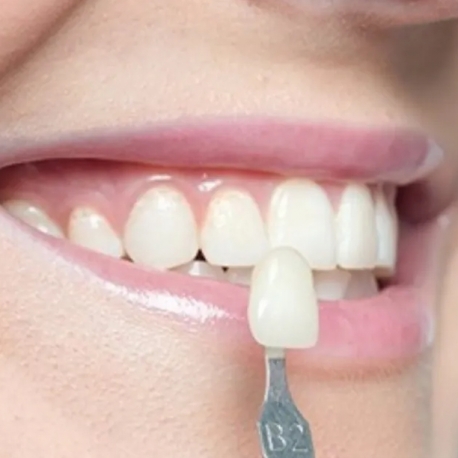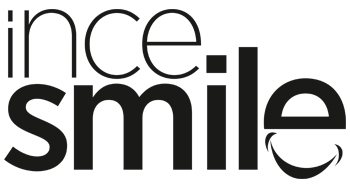Zirconium Porcelain Veneer

In recent years, with aesthetic expectations similar to natural teeth, attention has been paid to the aesthetics of the materials used in the mouth, especially in the anterior regions. Metal-supported porcelains, which have been used for many years, have begun to seek new alternatives due to the fact that the natural appearance cannot be achieved due to the lack of light permeability in the systems, and they cause allergic cases in the person from time to time, as well as cause graying in the gums over time.
Zirconium has started to be used in dentistry with its tissue-friendly feature. With the use of zirconium in dentistry, durability close to the metal infrastructure has been achieved. The fact that it does not reflect under porcelain like other materials, does not cause discoloration on the gums, and its resistance to corrosion has increased the use of zirconium.
What is the biggest advantage of zirconium crowns?
The most important advantage of zirconium porcelain is its aesthetics. Thanks to its light transmittance properties, a full harmony with natural teeth can be achieved. In this way, an excellent aesthetic result can be obtained.
Is it similar to natural teeth?
Since there is no metal reflection underneath, the artificial appearance seen in porcelains with metal infrastructure does not occur.
What are the advantages of zirconium for the patient and the physician?
Since the aesthetic appearance quality of the tooth is high and the light transmittance is high, its appearance is like a natural tooth. Since the porcelain blocks to be used are prepared with completely digital techniques, the margin of error is minimized.
Can zirconium be used in porcelain on implants?
In addition to crown bridge works, zirconium can be used in implant prostheses. The top of the zirconium material is covered with porcelain and ceramic, and aesthetically successful results have been obtained. The most important feature is that it is tissue friendly. It is highly resistant to chewing pressure, and because it is tooth-colored, it does not reflect gray from the gums.
Can zirconium be used in those with metal allergies?
Zirconium coatings do not contain metal, so they do not cause metal allergies.
Is it healthier than metal-based porcelain?
It is more advantageous in terms of general body health compared to metal supported prostheses. Since it is a 99% tissue-friendly material, it is not allergic.
Does it cause a taste change in the mouth?
Since it does not contain metal, it does not cause any taste changes and does not cause odor.
Does it cause bad breath?
Thanks to its gingival compatibility and full adaptation to the cut tooth, it is the closest option to the natural tooth, it does not create odor.
Do zirconium-coated teeth turn yellow in the future?
It does not cause plaque accumulation due to its polished and smooth surface. For this reason, it is not affected by colorants such as coffee, tea, cigarettes, and its color remains constant.
Does it reflect from under the coating on dark teeth?
Excellent aesthetic results can be obtained even on very dark colored teeth, as it has the ability to mask the tooth color coming from below.
How should I care for my zirconium crowns?
You can clean your mouth the same way you brush your natural teeth. Dental floss is used between the teeth and 'superfloss' is used for the edentulous areas under the bridge. Problems that may occur when physicians visit regularly every 6 months are determined and precautions are taken.
Will the bottom of zirconium crowns rot, how long can I use them?
Since they are produced with a very sensitive work, they are perfectly compatible with the cut tooth surface. In this way, since there is no gap between the zirconium porcelain and the tooth where bacteria can leak, it does not allow the formation of caries. The duration of use varies depending on the person and the conditions of use, but it is longer lasting than metal-based prostheses. You can use it for many years when regular checks are made.
Will it damage my tooth when it is removed when it is wanted to be changed?
Since zirconium veneers are cut and removed, you will not feel any discomfort. It does not cause tissue loss in teeth.
How are zirconium veneers applied?
The tooth is slightly reduced, as in metal-supported veneers, and when the gingiva becomes healthy, a precise measurement is taken with special impression materials and spoons suitable for the mouth. In the laboratory environment, the zirconium substructure and porcelain superstructure in a suitable color for the tooth are processed and adapted to the tooth in the clinical environment. Finally, it is permanently adapted to the tooth with special adhesives. Now you can use it easily without distinguishing it from your own teeth.
How much substance will be lost in my teeth during the procedure?
The substance loss is more than porcelain lamina. It is the same as metal-backed porcelain veneers. A shave of 1-2 mm is made from your normal tooth surface.
Will I feel pain during the procedures?
Cutting operations are performed under local anesthesia, and then a temporary tooth-colored coating is applied to prevent stinging in hot and cold temperatures. A slight tingling is seen in very few of the patients, and the process is completed without any problems in general.
In cut teeth
